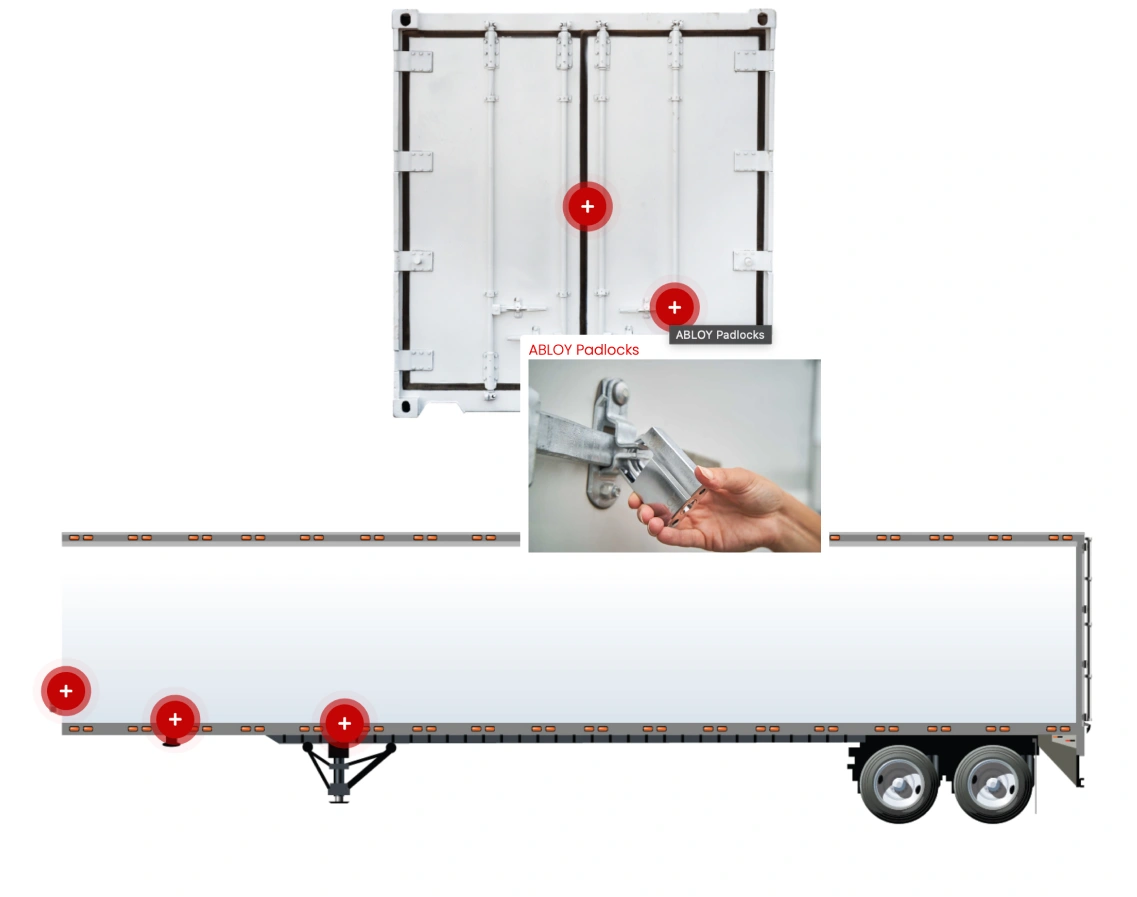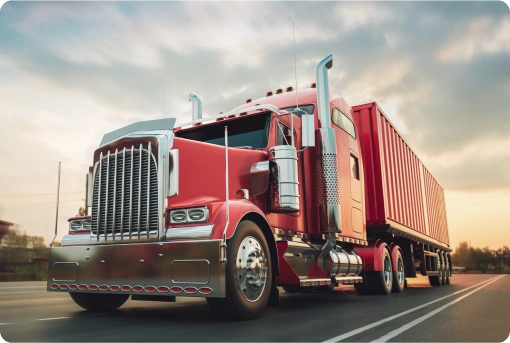Why Rig Security Matters
Every shipment represents a combination of risk and responsibility. A single stolen load can cost a company hundreds of thousands of dollars in freight value and damage long-term customer trust. The rise of high-value freight categories such as electronics, food, and pharmaceuticals has made trucks the most convenient target in the supply chain.
Cargo theft typically occurs when trucks are parked or staged for delivery. Thieves exploit short stops, unsecured yards, or inattentive procedures. Once a trailer is gone, recovery rates are low and the ripple effects across claims, insurance, and customer service are extensive. Rig security exists to stop this chain of events before it begins.
For most fleets, the right security strategy is not a one-size-fits-all solution but rather a coordinated plan involving hardware, software, and human awareness working in sync.
How Thieves Target Rigs
Understanding how theft occurs helps shape stronger defenses. The most common theft scenarios involve parked or dropped trailers left unattended for even short periods. Thieves can pull up with a tractor, release the brakes by tampering with the glad hands, and drive away in minutes.
In other cases, thieves use deceptive pickups, arriving with falsified documents to pose as legitimate carriers. Pilferage, small, selective thefts of valuable cargo, is also common and often goes unnoticed until the shipment reaches its destination.
Even well-locked trailers are vulnerable if seals are easy to replace or if drivers skip verification steps. Theft is no longer a random act of opportunity; it is a calculated business model that thrives on speed, familiarity, and predictability.
Securing the Trailer
The trailer is the central target, so protection starts there. Mechanical immobilization devices like king pin, glad hand, and landing gear locks serve as the foundation. Each one addresses a different vulnerability, and when combined, they create a system that slows or completely prevents movement without authorization.
A king pin lock secures the coupling point, preventing another tractor from connecting. It must be made of high-strength materials and fitted with a pick-resistant cylinder, preferably one using a restricted key system that cannot be duplicated. Fleets that manage multiple yards often integrate a master key system so maintenance or security teams can respond quickly without compromising control.
Glad hand locks cover the air line connectors, blocking air flow and keeping the brakes locked. They are a quick, lightweight solution that stops theft attempts that rely on brake manipulation. Landing gear locks add yet another layer by preventing the legs from being raised. Together, these three devices form a simple but powerful trio that immobilizes a trailer physically and visually.
Protecting Cargo at the Door
While immobilization prevents theft of the entire unit, the next threat is at the doors. Cargo is often stolen by breaking into trailers rather than moving them. Door and hasp systems are designed to prevent prying, cutting, or tampering.
Permanent ENFORCER® hasps are bolted into place, replacing standard trailer door latches and providing reinforced protection against prying and forced entry. Pairing a hasp with a high-security padlock, especially one using an ABLOY® disc cylinder, creates a strong line of defense that can withstand cutting and torque attacks.
For sealed shipments, the ENFORCER® Seal Guard™ Lock is an example of a solution designed specifically to protect both the trailer doors and the integrity of the seal. A broken or missing seal can trigger rejected loads and claims, so mechanical protection at that point has both security and compliance value.
Adding Visibility with GPS and Alerts
Modern cargo protection goes beyond physical locks. Telematics and GPS systems provide visibility into the location and condition of every rig in the network. These systems can create geofences around approved routes, sending alerts when a vehicle deviates or stops in an unplanned area.
Many fleets now integrate door sensors, temperature probes, and vibration detection for layered awareness. When paired with an operations center or security control room, alerts can trigger escalation protocols that contact the driver, verify activity, and, if necessary, involve law enforcement in real time.
Reducing Risk Through Planning
Security begins long before the rig is parked. Route and parking decisions directly affect risk exposure. High-theft areas are well documented by industry intelligence networks, and route planning tools can incorporate that data to minimize exposure.
Whenever possible, drivers should park in well-lit areas or secure yards with access control and surveillance. If the trailer must remain unattended, it should be backed against a wall or another trailer to block the doors. Avoid predictable patterns such as parking at the same truck stop on every route, and consider staging loads closer to delivery points when feasible.
By treating parking and routing as security decisions rather than logistical conveniences, fleets can eliminate a significant portion of theft risk.
The Human Factor
Drivers are the front line of rig security. Even the best hardware can fail if it is not used correctly or consistently. Ongoing training ensures that operators understand not only how to use locks and tracking systems, but why each step matters.
A strong security culture begins with daily habits: confirming seal numbers, locking the trailer every time it is unattended, verifying pickup paperwork, and knowing what to do if something looks suspicious. Experienced drivers often develop strong instincts, but reinforcement through policy and communication keeps those instincts aligned with company procedures.
When incidents occur, quick reporting and accurate documentation help the security team respond effectively. Fleets that encourage proactive communication from drivers often catch suspicious activity early and prevent small issues from becoming losses.
Fleet-Level Implementation
Rig security is most effective when standardized across the fleet. Consistent equipment, procedures, and key control policies eliminate confusion and ensure accountability.
A comprehensive program includes a defined lock kit for every truck and trailer, a documented process for issuing and tracking keys, and a clear chain of responsibility for security checks. Yard managers should conduct periodic audits of trailers and parking areas, verifying that devices are in use and seals are intact.
Standardization also simplifies training and maintenance. When everyone uses the same equipment and follows the same process, compliance improves naturally and gaps are easier to identify.
Building a Security Ecosystem
The most secure fleets don’t rely on a single product or rule; they create an ecosystem where every layer supports the others. Physical deterrents delay the attack. Tracking and monitoring detect unauthorized activity. Training and procedure ensure consistency. Together, these elements build resilience.
In practice, this means integrating hardware selection, driver protocols, route management, and data analytics into one cohesive strategy. Security data from telematics systems can reveal patterns in idle time, parking behavior, or high-risk lanes. Those insights inform decisions about equipment deployment and training focus.
This is the difference between reacting to theft and actively managing risk. A fleet that measures its exposure can also measure its progress.
Conclusion
Rig security is both a discipline and an investment. Every lock, sensor, and training session contributes to a stronger, more reliable logistics network. Mechanical protection stops theft attempts at the source. Digital tracking delivers visibility across the journey. Well-trained drivers and standardized policies tie it all together.
In an industry defined by movement and trust, securing the rig is securing the business. Fleets that commit to layered protection not only reduce theft losses but also demonstrate to shippers that their cargo is in capable, professional hands.



